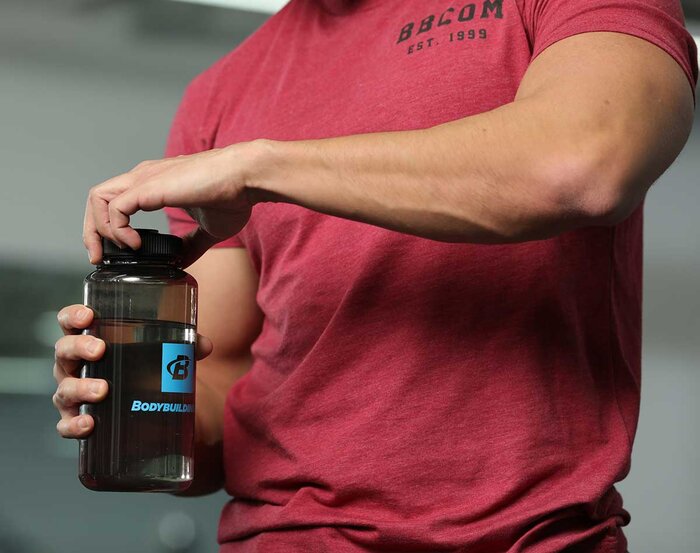Main | Nutrition | Supp Stack | Water & Sodium | Training & Cardio | Posing | Stage Presence
The biggest misconception about peak week concerns water. The logic is simple: If you cut water, there will be less under your skin and you'll look more shredded, right? WRONG!
Sodium is a related factor routinely mismanaged by competitors on the path to their show. This video does more than dispel those myths, it tells you how to get it right so you can win!
The Science Behind Salt Intake
The body stores water inside and outside of the body's cells. The stuff inside is great; it makes your muscles look full. "Extracellular" water is what people are attempting to eliminate by cutting water and taking diuretics.
The body maintains a 70/30 ratio of intracellular-to-extracellular water, a ratio tightly controlled by internal systems. Your body's water balance is so crucial to cell function, ion balance, blood volume, and blood pressure that it's regulated by the minute! There's no way to pull water from one compartment without affecting the other.
So, if you take a diuretic or cut water, you'll lose extracellular water, but to maintain homeostasis, you'll also lose intracellular water. The ratio will remain unchanged; all you will have done is flatten out your physique.

Another aspect of a typical peak week that goes hand in hand with cutting water is cutting sodium, the results of which can be just as disastrous. The sodium balance in your body directly affects fluid dynamics and blood volume. What sodium depletion does is increase levels of aldosterone, a hormone whose job it is to cause the re-absorption and retention of water and sodium.
After two days of sodium depletion (standard in most peak week protocols) aldosterone levels have doubled! Cut out sodium even earlier, and by day 6, levels have more than tripled!
Elevations in aldosterone will cause increased water retention as the kidney reabsorbs both sodium and water back into circulation. Deficiencies in dietary sodium also lead to a drop in blood pressure, pushing plasma water out of the vascular system.
That means less water in blood vessels, making you appear full and vascular; and more in the surrounding space, making you appear soft. What's more, you're now reabsorbing more water back into circulation due to elevated aldosterone. Only, without sufficient pressure in the blood vessels, that reabsorbed water will also be heading into the subcutaneous layer, exactly where you don't want it. Instead of tricking your body, you've tricked yourself, and it'll show onstage.
This is a big reason why competitors who couldn't fill out the day of the show, no matter their carb consumption, often experience a weird epiphany after their post-contest cheat meal: They look 10 times better an hour after pigging out!
Most people think this means that they didn't carb up enough, but that simply isn't true; after all, they loaded carbs for 2 or 3 days! The cheat meal likely contained lots of sodium, and they drank a lot of water with it. That combination finally allowed them to fill out properly. That's why they looked so much better! The carbs didn't fill out their muscles, the water and sodium did! In contrast, carbs consumed while cutting water will never fill you out properly.
My recommendations: Keep water and sodium intake the same. If you're used to drinking 2 gallons of water a day, continue drinking that amount up until an hour or two before the show—and that's just so you don't feel like you have to pee standing onstage! Similarly, if you're accustomed to eating 3 grams of sodium a day, continue doing so during peak week.
In fact, I've found that eating a meal relatively high in sodium, carbs, and fat 2 hours before stepping onstage can drastically increase vascularity and fullness.
Main | Nutrition | Supp Stack | Water & Sodium | Training & Cardio | Posing | Stage Presence


